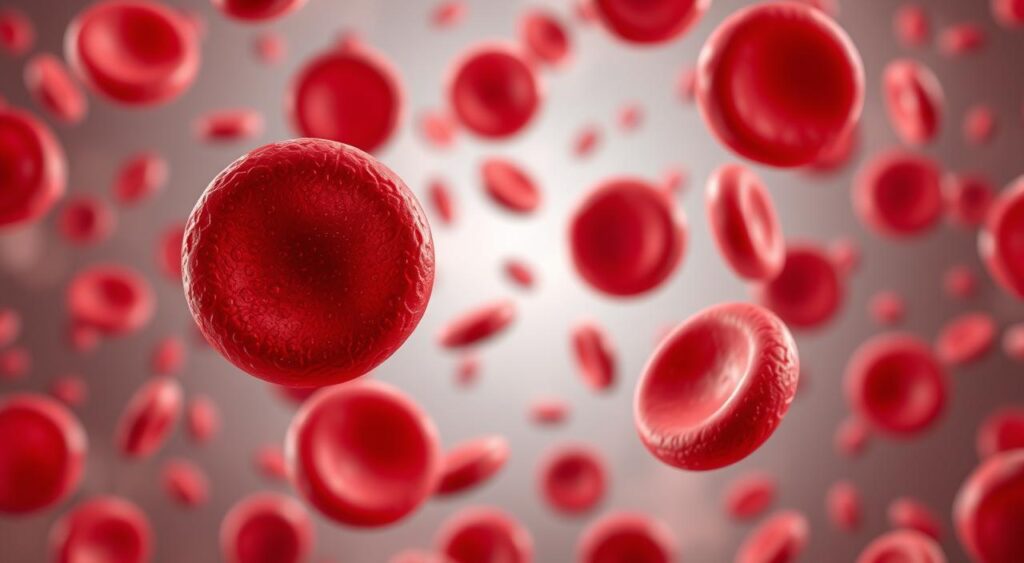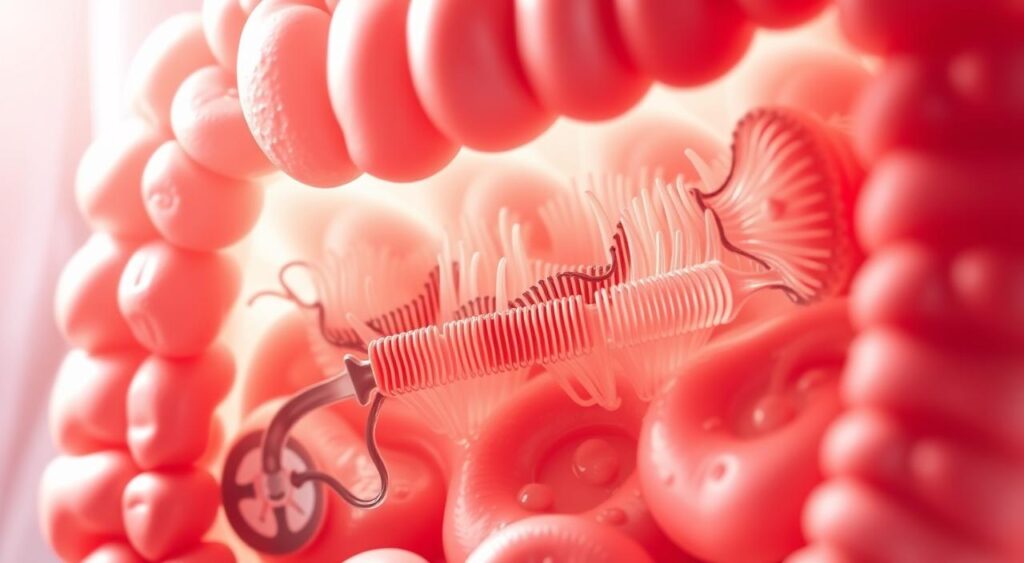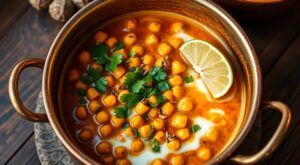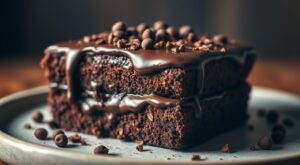Did you know nearly 10 million people in the U.S. lack enough iron to fuel their bodies? This essential mineral powers everything from your energy levels to your immune system—and without it, even simple tasks can feel exhausting.
Your body relies on iron to create hemoglobin, a protein that delivers oxygen to every cell. When you don’t get enough, you might feel sluggish, dizzy, or struggle to focus. Registered dietitian Julia Zumpano emphasizes that “balanced meals with diverse iron sources are the easiest way to avoid deficiencies.”
There are two types of iron: heme (from animal products) and non-heme (from plants). Both play vital roles, but pairing them with vitamin C-rich foods like citrus or bell peppers can boost absorption. Whether you’re vegan or a meat-lover, smart food choices keep your energy steady and your mind sharp.
This guide will show you how to build meals that naturally support your needs—no supplements required. Let’s dive into the science, explore tasty options, and unlock simple strategies to feel your best.
Key Takeaways
- Iron helps your body produce energy and transport oxygen efficiently.
- Heme (animal-based) and non-heme (plant-based) sources work together to meet daily needs.
- Vitamin C enhances iron absorption when paired with meals.
- Adults need 8–18 mg daily, depending on age and gender.
- Fatigue and pale skin can signal low iron levels.
- Dietary choices directly impact how well your body functions.
Understanding the Importance of Iron in Your Body

Without proper mineral levels, your body’s delivery system falters. Red blood cells act like tiny cargo ships, transporting life-giving oxygen to every tissue. At the heart of this process? A protein called hemoglobin—and its star ingredient.
The Role of Iron in Red Blood Cells
Hemoglobin contains four protein chains, each holding a molecule that binds oxygen. This component allows blood cells to carry oxygen from your lungs to muscles, organs, and even your brain. When levels drop, cells can’t produce enough energy, leaving you feeling drained.
Nearly 50% of pregnant women worldwide experience deficiency, according to the World Health Organization. Regular blood tests measure hemoglobin and hematocrit levels, giving clues about your body’s oxygen-carrying capacity.
Recognizing Symptoms of Iron Deficiency
Early signs often creep in slowly:
- Persistent tiredness despite adequate sleep
- Shortness of breath during routine activities
- Pale skin or brittle nails
Women aged 19–50 need 18 mg daily—double the amount men require—due to menstrual blood loss. Dietitian Emily Castillo notes: “Fatigue that disrupts daily life warrants a conversation with your doctor about possible anemia.”
The Science Behind Iron Absorption

Your morning oatmeal might pack minerals, but does your body actually use them? Absorption determines whether nutrients fuel your cells or exit unused. Let’s break down how this process works—and why it matters for maintaining energy.
How Your Body Absorbs Iron
When you eat, stomach acid breaks down food, releasing minerals. Heme sources (like meat) get absorbed 2-3 times faster than plant-based options. Intestinal cells then transport these molecules into your bloodstream.
Non-heme varieties require extra help. Vitamin C converts them into a more usable form, boosting uptake by up to 300%. Without this teamwork, much of what you consume might go to waste.
Factors That Affect Iron Absorption
Meal combos make or break efficiency. Calcium-rich dairy blocks absorption if eaten with iron-packed meals. Conversely, bell peppers or oranges act like turbochargers.
Other influencers include:
- Stomach acidity levels (low acid reduces uptake)
- Phytates in beans and grains (soaking helps neutralize them)
- Certain medications like antacids
The National Institutes of Health notes only “10–35% of heme and 2–20% of non-heme iron gets absorbed”. This gap explains why pairing strategies matter for avoiding low levels.
Iron rich foods: A Comprehensive Guide
What’s on your plate could unlock your body’s full energy potential. Heme and non-heme options work differently, but both play crucial roles in keeping your system strong. Let’s explore how to mix and match them for maximum impact.
Exploring Heme Iron Sources
Animal-based choices pack a powerful punch. Your body absorbs heme varieties 2-3 times faster than plant-based ones. A 3-ounce serving of beef liver delivers 5.2 mg—nearly 30% of your daily needs. Oysters and tuna are also stellar picks, offering quick-absorbing fuel for busy days.
Discovering Non-Heme Iron Options
Plant-powered picks require smart pairing. Lentils provide 3.3 mg per half-cup, while cooked spinach offers 15% DV. Combine these with vitamin C-rich tomatoes or citrus to boost absorption. Fortified cereals can add 18 mg per serving—perfect for vegan diets.
| Food | Type | Iron per Serving | Pairing Tip |
|---|---|---|---|
| Beef Liver | Heme | 5.2 mg | Serve with onions |
| Lentils | Non-Heme | 3.3 mg | Add lemon juice |
| Spinach | Non-Heme | 3.2 mg | Mix with bell peppers |
This table shows how simple swaps can transform your meals. Whether you prefer steak or salads, strategic combos help your body use every milligram effectively.
Delicious Meat-Based Sources to Boost Your Iron Levels
Your meals can be both flavorful and nutrient-packed when you choose the right animal proteins. These options deliver heme iron—a form your body absorbs effortlessly compared to plant-based alternatives.
Nutritional Benefits of Organ Meats and Red Meat
Beef liver stands out as a nutritional powerhouse. A 3-ounce serving provides 5.2 mg—that’s 29% of your daily needs. It’s also loaded with vitamin A, supporting vision and immune health. Chef and nutritionist Marco Rossi notes: “Organ meats offer concentrated nutrients often missing in modern diets.”
Ground beef (85% lean) gives 2.2 mg per cooked patty. Pair it with onions or mushrooms to enhance flavor and nutrient uptake. Red meat also supplies B vitamins for energy production and zinc for immune function.
Don’t overlook poultry and seafood. Dark turkey meat offers 1.4 mg per 3-ounce portion. Shellfish like clams pack 2.4 mg plus omega-3 fatty acids for heart health. These options keep meals interesting while delivering essential minerals.
| Protein Source | Serving Size | Iron Content |
|---|---|---|
| Beef Liver | 3 oz cooked | 5.2 mg (29% DV) |
| Ground Beef | 3 oz cooked | 2.2 mg (12% DV) |
| Clams | 3 oz steamed | 2.4 mg (13% DV) |
Rotate these sources throughout your week. Try liver pâté on whole-grain toast or add clams to pasta dishes. Balance meat portions with vegetables and whole grains for meals that sustain energy without overdoing saturated fats.
Plant-Based Iron Options and Absorption Tips
Who says you need meat to keep your energy up? Plants offer powerful mineral sources that work wonders when paired strategically. Let’s explore how to maximize their benefits without compromising taste or nutrition.
Legumes, Greens, and Other Vegetables
Lentils and chickpeas deliver 3–4 mg of iron per cooked cup—about 20% of daily needs. Dark leafy varieties like spinach pack 15% DV in just half a cup. Tofu adds 3 mg per serving, making it a versatile base for stir-fries or scrambles.
Registered dietitian Lisa Kim notes: “Beans aren’t just protein powerhouses—they’re stealth sources of essential minerals.” Try adding white beans to soups or blending black beans into veggie burgers for an easy boost.
Pairing with Vitamin C for Better Absorption
Citrus fruits and bell peppers act like keys that unlock plant-based minerals. A squeeze of lemon on lentils or sliced strawberries in a spinach salad can triple absorption. Even steamed broccoli with tahini sauce creates a winning combo.
| Plant Source | Iron per Serving | Vitamin C Pairing |
|---|---|---|
| Cooked Lentils | 3.3 mg | Tomatoes |
| Spinach | 3.2 mg | Bell Peppers |
| Tofu | 3 mg | Broccoli |
These combos help you get enough nutrients without supplements. Roast chickpeas with paprika, or toss kale with orange slices—simple tweaks make meals work harder for your health.
Creative Ways to Incorporate Iron Into Your Meals
Revamping your plate doesn’t require complicated recipes—just smart ingredient swaps. Combining heme and non-heme sources creates meals that fuel your cells while keeping flavors exciting. Let’s explore how to turn everyday ingredients into nutrient-packed powerhouses.
Simple Combos for Maximum Impact
Try a Mediterranean-inspired lentil stir-fry: sauté red lentils with garlic, cherry tomatoes, and kale. Top with lemon zest and grilled chicken strips. The citrus boosts absorption, while the poultry adds quick-absorbing heme varieties. Perfect for busy weeknights!
For plant-based days, whip up a black bean and quinoa bowl. Mix cooked quinoa with roasted sweet potatoes, avocado, and a lime-cilantro dressing. Add a side of steamed broccoli florets—their vitamin C content helps your body use every milligram.
| Meal Idea | Key Sources | Vitamin C Pairing |
|---|---|---|
| Turkey Spinach Skillet | Ground turkey, spinach | Orange slices |
| Chickpea Curry | Chickpeas, coconut milk | Bell peppers |
| Beef & Broccoli | Flank steak, broccoli | Mandarin wedges |
Chef Tip: “Cast iron cookware can add trace amounts to your food—especially when preparing acidic dishes like tomato sauce.” This subtle boost complements your diet without altering flavors.
Experiment with textures and spices. Roast chickpeas with smoked paprika for crunchy salad toppers, or blend white beans into creamy dips. Your taste buds—and health—will thank you for the variety!
Everyday Lifestyle Tips for Boosting Iron Naturally
That morning coffee might wake you up, but it could also be stealing nutrients if timed poorly. Small daily adjustments often make the biggest difference in how your body uses essential minerals. Let’s explore practical ways to optimize your routine without drastic changes.
Smart Habits for Better Nutrient Uptake
Timing matters. Wait at least one hour after meals before drinking coffee or tea—their tannins block absorption. Instead, sip orange juice or eat strawberries with your breakfast oats. These vitamin C-rich choices help your system grab more minerals from plant-based meals.
Consider these strategies:
- Pair iron-packed lunches with bell peppers or citrus slices
- Space calcium supplements 2–3 hours apart from mineral-rich meals
- Cook acidic foods like tomato sauce in cast iron pans
“Your latte habit might need a schedule change,” notes dietitian Sarah Nguyen. “Enjoy coffee between meals instead of with your spinach omelet to avoid nutrient competition.”
| Tip | Benefit | Action Step |
|---|---|---|
| Meal Timing | Reduces absorption blockers | Drink tea 1 hour post-meal |
| Cookware Choice | Adds trace minerals | Use cast iron for soups |
| Activity Level | Enhances circulation | Walk 20 minutes daily |
Women and active adults should prioritize regular blood tests. The CDC recommends screening every 2–3 years for those at risk. Light exercise like walking improves blood flow, helping nutrients reach cells efficiently.
Supplements can help when dietary gaps exist, but always consult your doctor first. Overloading your system might cause digestive issues. Focus on food-first approaches—roasted pumpkin seeds make crunchy salad toppings, while dark chocolate offers a sweet mineral boost.
Conclusion
Your energy levels and overall well-being hinge on maintaining proper mineral balance. Heme sources like lean meats and seafood deliver fast-absorbing fuel, while plant-based picks like lentils and spinach become powerhouses when paired with vitamin C. Together, they form a defense against low energy and cognitive fog.
Women and active adults face higher risks of deficiency due to biological needs and lifestyle demands. The CDC reports 1 in 5 women develops anemia during childbearing years. Recognizing early signs—like persistent fatigue or shortness of breath—helps you act before symptoms escalate.
Simple strategies make a big difference. Combine turkey with bell peppers in stir-fries, or blend strawberries into morning oatmeal. Avoid drinking tea with meals, and consider cooking acidic dishes in cast iron pans for an extra boost. These tweaks help your body use every milligram effectively.
If daily tasks feel overwhelming or your nails become brittle, consult a healthcare provider. Blood tests can reveal hidden gaps, and dietary adjustments often restore balance. Remember: smart meal planning paired with mindful habits keeps your system running smoothly—no supplements required.
FAQ
Why is iron important for my body?
Your body uses this mineral to make hemoglobin, a protein in red blood cells that carries oxygen. Without enough, you might feel tired or dizzy, as your tissues won’t get the oxygen they need.
What are the signs I might not be getting enough iron?
Common symptoms include fatigue, pale skin, shortness of breath, or frequent headaches. If you notice these, consider checking your levels with a healthcare provider.
How does my body absorb this nutrient effectively?
Heme sources like beef or chicken are absorbed more easily. For plant-based options like lentils or spinach, pair them with vitamin C-rich foods like oranges or bell peppers to boost uptake.
What foods are the best sources of heme iron?
Organ meats (like liver), red meat, poultry, and seafood (clams or oysters) are top choices. These animal-based options are readily absorbed by your body.
Can I meet my needs through a vegetarian diet?
Yes! Beans, tofu, fortified cereals, and dark leafy greens like kale provide non-heme iron. Combine them with citrus fruits or tomatoes to enhance absorption.
Are there habits that block iron absorption?
Drinking coffee or tea with meals, calcium supplements, or high-fiber foods can reduce uptake. Try spacing these out by 1–2 hours for better results.
What’s a simple way to add more iron to my breakfast?
Blend spinach into a smoothie with strawberries, or top oatmeal with pumpkin seeds. Even cooking in a cast-iron skillet can boost your intake!
When should I consider supplements?
If dietary changes don’t resolve deficiency symptoms, consult a doctor. They might recommend supplements, but avoid self-prescribing—too much can be harmful.
How does vitamin C help with absorption?
It converts plant-based iron into a form your body can use more efficiently. Try adding lemon juice to lentil soup or bell peppers to quinoa salads.
Are fortified foods a good option?
Absolutely! Many cereals, breads, and plant-based milks are enriched with this nutrient. Check labels to find options that fit your diet.



